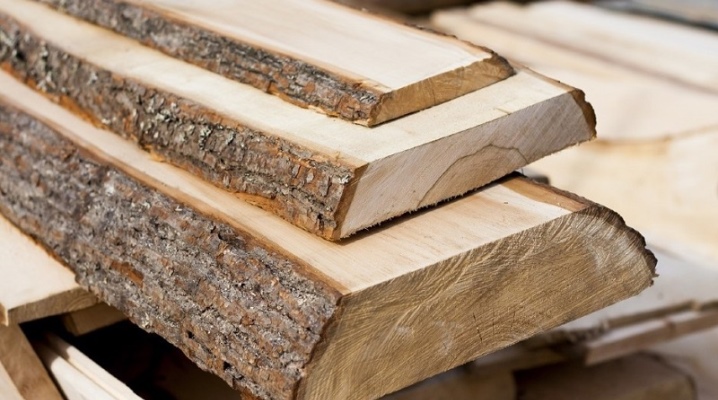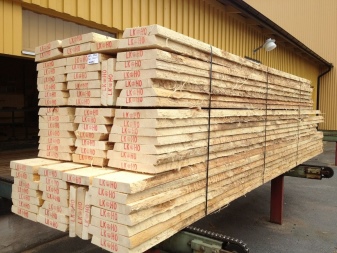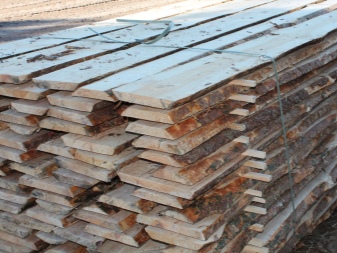What is a wane board and where is it used?

Lumber is different. Faced with the concept of "wane", the man in the street is lost. The material of our article will tell you what this means, what kind of wane boards are, and also where they are used.


What it is?
Shedding is a common defect in lumber that occurs when sawing logs on woodworking machines. In fact, these are unharvested areas of bark on a piece of wood or a mechanical defect in the form of rough pieces of wood at the edges or layers. Scab is considered an industrial production defect, a by-product of the manufacture of edged material. This happens if part of the tree did not fall under the machine for two reasons: because of the small width or the large volume of material. This defect is allowed for low grades of sawn timber and is considered to be eliminated. It does not affect the durability of the workpieces, but it degrades their aesthetic characteristics and limits their use.
The obsol can be located on one or simultaneously two edges of products... Moreover, for each grade of sawn timber, it should not exceed the maximum permissible value. Its measurement is carried out in fractions of the length of the workpiece, the width of the face and the edge. The sag may appear as streaks, spots, or a solid area. The flaw in the lumber is detected by special scanning devices. They are equipped with high-speed laser sensors located at 30 and 15 cm along the length of the boards.
The accuracy of grade assignment on such devices is 90% with a wane gradation of 0.1 or 0.3 m.


Impact on performance
The consequences of the defect depend on the scope of application of the lumber. It can be left without further processing, or it can be cleaned, getting rid of the bark by hand. If this is not done, the likelihood of the spread of rot increases, as well as the reproduction of harmful insects that grind wood. The presence of a defect increases the volume of waste when sawing wood. The more wane, the higher its impact on the performance of the lumber. At the same time, wane complicates the assembly of products from blanks. It increases the risk of cracking the boards from hammering in nails, and requires high precision assembly of products. The presence of bark on the surface increases the risk of damage to the wood by harmful insects, as well as the likelihood of contracting fungal infections.
If the workpiece has wane, its grade is considered low. You can use such timber only for ancillary work. Wane lumber is not used in construction. If they save on material, the bark must be removed from the boards. Besides that they don't dry well unlike high grade material, mold grows under the bark. When processing such boards with chemicals, only the bark is impregnated, which eventually collapses and exfoliates, and insects are under it. Beetles are not affected by chemicals, since they live between the bark and the tree itself. Sheathing of buildings with such material is short-lived and unaesthetic.
As a rule, these boards differ in thickness, such a coating does not look monolithic.



Species overview
It is possible to classify edged boards with a conditionally eliminated violation according to two criteria: sawing and processing. The type of violation is influenced by the point of its location and the coverage of the area.Wane is assessed along the length and the greatest decrease in the width of the sides of the product (in linear units or fractions of dimensions).


By saw
Based on the features of sawing wood, wane can be sharp and dull. Billets of the first type have an edge consisting entirely of wane. Spicy wane on finished products leads to a violation of the integrity of the product (for example, it is impossible to store bulk material in it). Stupid (pencil) type of sawing sawn timber does not occupy the entire area of the edge of the workpiece. During the cut, it is only partially retained at the edge. Such a material is suitable for creating structures that do not impose strict requirements for aesthetics. But at the same time, a dull wane board should have an optimal level of strength.
Dull wane can be located on the back of the profiled timber blanks. but it should not go into the groove or spike and interfere with the lumber lock.
It is unacceptable that the length of the blunt wane on the faces and edges is more than 1/6 of the length of the workpiece. If there is more, it is grade 4 (lowest) material.


By processing
Depending on the processing, wane boards are edged and unedged. In edged sawn timber, the wane does not exceed the permissible value GOST 2140-81... Edged boards are obtained by sawing pre-processed logs in order to exclude the remnants of wane on the edges and ends of the workpieces. In this case, a strictly minimal blemish is allowed in products from different tree species (deciduous and coniferous). Technical characteristics and external data depend on the type of cut. In analogs of the unedged type, the wane values are higher than the established standards.
Edged wane board has a conditional gradation of varieties depending on the quality of the wood. However, grade 1-2 of material with flaws is not equal to grade 1 or 2 of quality sawn timber. Unedged varieties are obtained by sawing logs in the longitudinal direction. They have sharp edges and varying edge widths. The production technology implies a lower volume of industrial costs, which explains the low cost of the material.


A wane board with a wane on one side is called half-edged... The rest of the workpiece surfaces are clean, machined and smooth. Such lumber is considered better than other wane analogues in terms of technical characteristics. At the same time, it is budgetary, with a minimum of scrap, it is considered an alternative to the optimal edged board without wane.
Wash is not present in selected and first grades of wood on either side of the workpiece... Otherwise, the seller simply deceives the buyer by trying to sell a low quality product that requires additional processing.
When buying material, you need to be extremely careful, since unscrupulous sellers often sell defective products of inferior quality to customers.


Applications
The timber that has preserved the shell after processing on the machine is used for the installation of scaffolding, the construction of non-residential outbuildings, flooring, as well as temporary structures. Pallets and other containers are made from it. To use the blanks for other purposes, the bark must be removed. Removing the bark, however, takes time. Crawl boards are used in structures that do not require the accuracy of the material fit. Despite this, they are used to decorate the walls of arbors, baths.
However, in an attempt to save on cladding, the customer receives a short-lived and low-quality coating. Due to the presence of bark, moisture will remain under it, such boards will warp. Someone buys wane material to create fences. Fences of this type do not look aesthetically pleasing, boards are purchased due to low prices... Fences have different widths of "picket", but they can be aligned along the top edge.



Also wane boards are taken for the construction of temporary partitions, closed load-bearing structures and fences. Unedged lumber with wane is used for auxiliary construction work (as formwork, scaffolding, flooring, temporary auxiliary structures). In addition, the material is taken for the manufacture of the subfloor, which is subsequently covered with sheet or dense roll material.
This type of raw material easy to turn into unusual interior elements. For example, hangers, chairs and other crafts are made from it, so it is often used in a creative direction. However, such products are specific, they do not look appropriate in every style of interior. The abundance of wane boards in the design depress the eye.
















The comment was sent successfully.